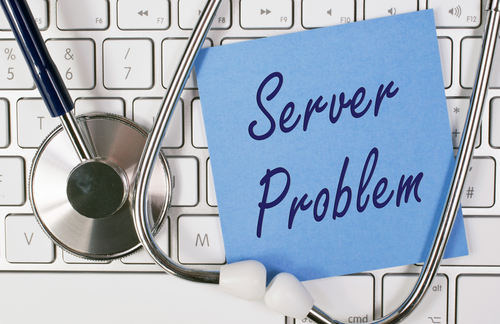If you own a well-established and popular online business, of the many reasons that can crash your website – especially on a busy day or during peak season – having it happen due to a spike in traffic is probably the most bittersweet of them. You are frustrated and angry because your site went down (and probably lost some money along the way), but at the same time you are proud and happy, albeit not by much, that the crash happened because you were able to draw such huge traffic your site couldn’t cope with it.
And then again, if you happen to have just launched your site when it crashed due to the same reasons, you might think you have done it all wrong and need to go back to the drawing board, or even totally give up the idea of an online venture.
Well, you needn’t panic. Or give up. You can prevent your website from crashing from traffic spikes by following a few rules and using a few tricks.
Here they are:
- Lighten Your Pages’ Burden: a website can crash just as much from a moderate amount of traffic accessing a content-heavy site as it can from a large amount of traffic accessing a “light” site. We live in times where “flat” design is the “in” thing. Do you think big companies [like Microsoft Inc.] are trending the no-frills, flat-square, minimal-color-range designs simply because they want to start a fad? No. They opted for a design that would give their sites and pages less content and thus faster loading-times. Of course, they are pleasant to look at too.
Remove dynamic content if it isn’t an absolute necessity – and even then, look for a better way of presenting it.
- Cut Down on Content Size: do you really need to have a huge image on your page? Do you need to share that video? Is there no way to break that mile-long delivery into, say, two or three pages? You get where we’re going with this, right?
- Look into your Code: even the largest companies on the internet continuously work to improve their source codes in hopes of faster loading-time and better request- handling. If you have the know-how, make it a point to keep up-to-date on recent tech trends in the coding world. There is always a better way of addressing a programming problem. Tweak and tune, and tune and tweak again, every once in a while.
- Scalable Hosting is a Good Idea: when you choose a hosting plan, don’t cut expenses for the sake of simply doing so. What you may save today might cost you dearly in the long run. If your host offers you a seamless, scalable plan take it. Make sure to test if your bandwidth, disk space and processing speed automatically scale up when there is a traffic surge.
- Caching Eases Loads: if you have a static site you should think seriously about server-side caching. Every time a visitor accesses a page on your site it is rendered and built before being loaded. It starts to create a resource-intensive problem as the amount of traffic rises significantly.
With server-side caching, a snapshot of your rendered and built page is stored (or “cached”) and served when another visitor requests the same page. It keeps being served until it expires a little while later (so updated snapshots are served). This significantly reduces load on your servers.
- CDNs are Your Friends: a CDN (content delivery network) consists of a network of servers that are located in different geographical locations. When you host your site on a CDN, each server or “node” in the network caches the static content of your site. When a visitor to your site accesses a page, it is the server nearest to them to that serves the static content.
This serves three main purposes:
- Your site will load faster, since the traffic is shared among a number of servers.
- The chances of your site being overwhelmed and then crashing are drastically reduced due to the division of the traffic-load.
- On the rare chance that it does crash, another node will be able to take up the slack and continue to serve your pages until the original one is up and running. Although it will slow down, your website won’t go offline.
- Protect Yourself Against DDoS: not all crashes that occur due to a spike in traffic are accidental. A DDoS (distributed denial-of-service) is an attack that is made to render your web server (or service) unavailable by bombarding it with communication requests until it is simply overwhelmed.
With DDoS protection your server will be able to protect itself from such attacks by identifying the malicious connection requests and letting your legitimate traffic through.
So, there you have your tips and tricks to prevent your website from crashing from traffic spikes.




















